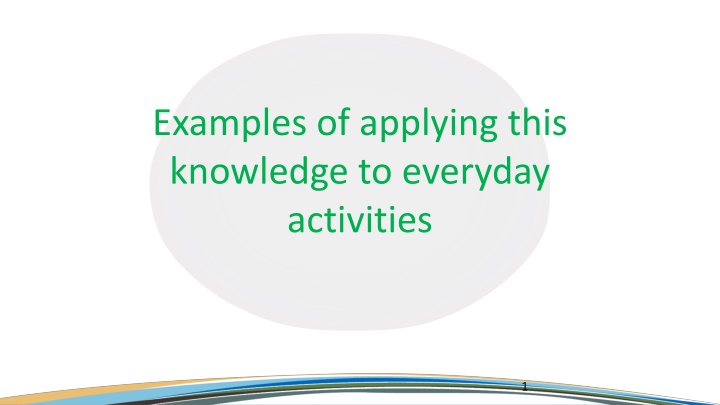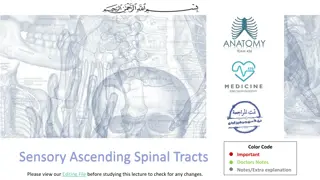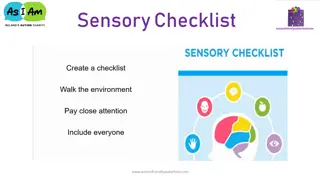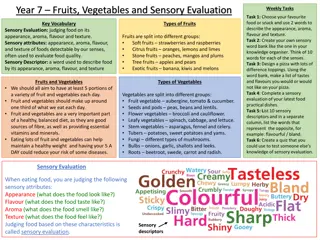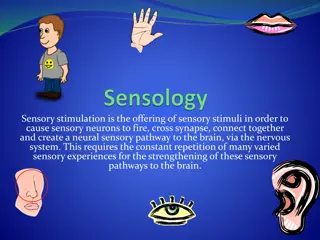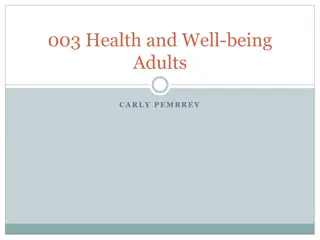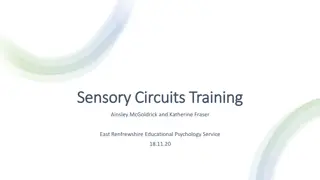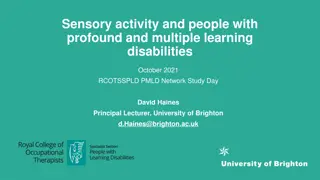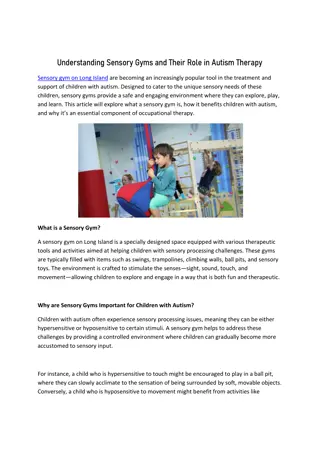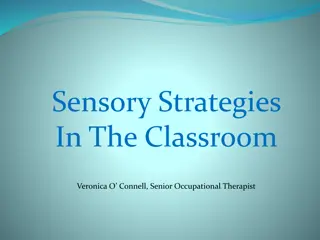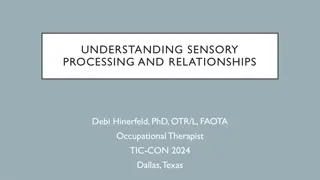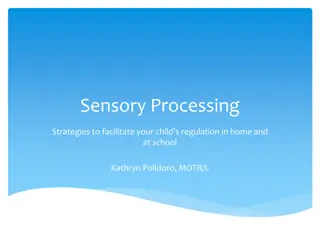Practical Strategies for Sensory-Friendly Everyday Activities
Discover practical tips for making daily tasks like tooth brushing and hair brushing sensory-friendly. Learn how to incorporate sensory considerations such as visual, proprioceptive, auditory, smell, taste, and tactile experiences into these activities to promote calmness and comfort.
Download Presentation

Please find below an Image/Link to download the presentation.
The content on the website is provided AS IS for your information and personal use only. It may not be sold, licensed, or shared on other websites without obtaining consent from the author.If you encounter any issues during the download, it is possible that the publisher has removed the file from their server.
You are allowed to download the files provided on this website for personal or commercial use, subject to the condition that they are used lawfully. All files are the property of their respective owners.
The content on the website is provided AS IS for your information and personal use only. It may not be sold, licensed, or shared on other websites without obtaining consent from the author.
E N D
Presentation Transcript
Examples of applying this knowledge to everyday activities 1
Tooth brushing Visual Try using a mirror Try visual cue cards Consider lighting brighter, artificial lights can be distracting/unsettling Copying/ doing together Vestibular Does your child feel stable? Try encouraging them to sit on a chair/stool/beanbag 2
Tooth Brushing Proprioception Remember this is calming try carrying out heavy muscle work activity prior to tooth brushing eg wall push ups, blow football/blowing bubbles Try introducing a big squashy bean bag or cushion to sit in Electric toothbrushes will give more feedback Auditory Consider the impact of background noise e.g. fan/radiator, others in bathroom and effect of echo which can unsettling/distracting Auditory input could be used as a support e.g. tooth brushing song, brush to the duration of their favourite song 3
Tooth Brushing Smell Strong smells can be distracting and can sometimes cause a strong disgust response. Preferred smells can promote calm and concentration Taste Some children dislike the flavour of toothpaste. Experiment with different flavours/makes. Ora nurse is a make of unflavoured toothpaste available. Tactile Preparation activities e.g. desensitise mouth with blowing/sucking games or bottle, deep pressure around mouth with flannel, change texture of toothbrush bristles, double sided brushes, temperature of water 4
Hair brushing Tactile Consider the texture of the hairbrush bristles. Remember touch under your own control is easier to tolerate so encourage your child to do as much independently as possible Try encouraging your child to complete some self head massage to desensitise prior to brush stroke down head with flat palms Proprioception Remember that heavy muscle work activities are calming, try to complete some of these prior to hair brushing if challenging. Consider seating options- stable seating will help your child feel calmer and in more control 5
Hair Brushing Visual Consider lighting glare and artificial lights can be unsettling/distracting Use a mirror to support if your child can see what is happening it will be easier to tolerate Minimise visual distractions Auditory Minimise auditory distractions, consider background Try creating a calm environment with calm music 6
Hair Brushing Vestibular Ensure your child is in a stable position Consider head movements and how this can affect balance therefore sitting to brush may be more easily tolerated Smell Ensure your child is comfortable with the smell of any hair products used encourage them to help choose their own if possible 7
Sleep Tactile Bath time 30min before bed, Bedding, deep pressure more calming than light pressure, consider preferred materials/textures, consider natural fibres vs synthetic (cotton/polyester), temperature of room and bedding (see handout), texture of toys Vestibular Consider sense of security some children feel safer with a bed lower to the floor or with a less bouncy mattress Proprioception Incorporate heavy muscle work into bedtime routine appropriate to the child, eg yoga for children 8
Sleep Visual Consider the visual aspects of bedtime - Dark, light, too much clutter, night light Incorporate hand-eye coordination activities to promote melatonin production eg colouring, jigsaws, threading before bed (store in a box under the bed for easy access) Auditory Unexpected noises can be distracting consider trying an app/recording of white noise/rain which can help those who are sensitive to noise. Consider noise in the rest of house, loud tv, outside noise etc and try to minimise e.g. with thick curtains. Choose calming bedtime story 9
Sleep Taste See Sleep and Diet leaflet from The Children s Sleep Charity avoid too much sugar/fizzy drinks, caffeine etc. Tryptophan (amino acid) can support sleep which is naturally present in dairy products, turkey, oats Smell Introduce calming smells to bath time, avoid strong smelling detergents for bedding 10
